Evolution of the Game of Billiards as Viewed on the Canvas of Art
If you ask most individuals, "what is the origin of basketball?" the majority of those replying would come up with an answer close to reality. They would likely say it started with Dr. James Naismith in 1891 when he created a winter sport game for the YMCA in Springfield Massachusetts using two peach baskets and a soccer ball. This is an accurate answer since the sport has a short history and is well documented.
The origin of baseball is less certain. Many would say it was invented by Abner Doubleday in Cooperstown, N.Y. in 1839. Actually, its origin is more likely to be from an 18th century game called rounders. Others point to games played in Russia and Germany as being the games that evolved into baseball. The confusion, I believe, is the result of baseball being an older game than basketball. Baseball was created at a time when there was less documented history via the written word.
The origin of billiards is far less certain than basketball or baseball because the game has evolved over four or five hundred years. Billiards came from a time when word of mouth was more prevalent than the written word. Art may be more useful in documenting the medieval history of billiards rather than scholarly writings that were censored by the churches of the 15th and 16th centuries.
Many historians believe billiards evolved from lawn games, similar to croquet, that were moved indoors in winter by the nobility of medieval times. The indoor game was played on a table that may or may not have had rails. It appears that many artists have been enchanted by the indoor game that was to become billiards. These artists put to canvas their perspective of billiard's place in gentile society. Because a picture is said to be worth a thousand words, take a look at the art works in the picture gallery below. In a silent way these works of art lead one down the evolutionary path of the game. Follow, how through time, billiards will move from lawn billiards to a table game. The early table games appear to be closer to the modern game of croquet than to billiards, as we know it today. There are artist’s indications that some early tables had holes or pockets. Yet other tables had no pockets, so clearly the gentile at some time had created new games of billiards which required no pockets. Note the use of a hooked stick (mace) that is being used rather than a leather, small millimeter, tipped cue to move the balls around the table. In pictorial splendor you can see how the cue has evolved through time.
Here is a great example of the lawn game than was the precursor to billiards on a table.

There is not much mention of billiards, except a few comments in literature until the 1620 art work below. The lawn game has moved indoors on a table with rails and pockets. There are hoops on the table like croquet. The shooter is using a mace. It is a game for the wealthy aristocrat.

Much like the art work above, in the 1674 art work below the players are using a mace and there are hoops and pockets on the table.

In the two 1694 art works below the players are playing on a table with rails and a hoop at one end, much like the lawn game. Unlike the 1674 drawing above these table have no pockets which indicated variations of billiards at the time. Also note they are advancing the ball by pushing it with a mace.


Below, Louis XIV is engaged in his favorite pastime of billiards. At the time it was still a game for the elite. This drawing is interesting in that it is a billiard table with a castle rather than a simple wicket (hoop) and the table has no pockets. Clearly, there were many types of billiard games being played as the game evolves.

By 1704 the game had not much evolved. It was still a game for the elite with time on their hands for leisure activity. The table has internal pockets (holes) and it has one hoop. Players are using a mace to move the ball.

In 1710 the table below has two hoops, rails but not pockets. The sticks used to push the balls have wide heads. These sticks are referred to as a mace.

Notice in this 1720 art work, the table has pockets and the hoops are gone. The players are still using a mace to push the ball.

In the 1720 picture below the player is hitting the ball with the butt end of his mace perhaps because the ball was too close to the rail for the player to use the end of the mace with a wide head. Perhaps, it is a cue rather than a mace. The Term “cue” comes from queue, the French word for tail, in reference to the practice of shooting with the headless end of the stick. The headless cue becomes more common later in the 1700 and early 1800s. Amazingly, the mace with its head and flattened tail still existed in the Brunswick-Balke-Collender catalog in 1904. I find no discussion of the balls being used but one would think they were turned from wood.
I really like the light over the table. I expect these are candles set in some kind of holder. I do not see any pockets, but there may be a hoop that is hidden.
This is the first art work that I have noted where there is a gathering of people and wine being poured. One can assume we are in a period where more people can afford leisure time. This likely is a pub setting where the table and game of billiards is the proprietor’s drawing card to bring patrons in to eat and drink. The table is now a money maker for the proprietor, a fact that was not lost on J. M. Brunswick in 1845 when he started his business. This for certain was the pitch for J. M. Brunswick’s salesmen to the saloon owner, “Add a billiard table to keep your customers entertained and they will stay longer, eat and drink more thus increasing your revenue per day”

Here is yet another 1720 art piece. The player is pushing the ball with a mace and the table has a hoop and no pockets. Check the size of the table. It must be at least a 6’ x 12’ table. It is hard to tell if this is in a pub setting or a wealthy person’s home. Billiards is still a game for the wealthy with leisure time for sport.

In the 1775 art work below it looks like the player is using a cue or the butt end of a mace. Clearly players are beginning to see the benefit of a pointed stick to move the ball directionally. Notice there are cues in one rack and maces in the other. As the cue is but a hard pointed stick, it was difficult to control the movement of the ball as the leather tip did not exist until it would be introduced by Francois Mingaud when his 1827 book “The Noble Game of Billiards” was published in France.
I expect this is a pub scene since there are so many cues and maces in racks. Notice the scoring markers on the wall between the racks.

Interesting wedged shaped tables in the 1780 and 1787 drawings below with players still playing with a mace. There are round scoring markers down low to the right of the cue rack in the 1780 art work. As the title says, “The First Marking Boards”


In 1790 the mace is being displaced by a cue with no head. There are very small pockets on the table. Players today would be challenged on this table. I see the round marking board on the right wall. A round marking board (score keeper) must have been quite common in the late 1700s but I have never seen one in a display or at auction. If you have one do send me a picture.

I am not sure how to interpret the 1800 art work below. I will leave that to you. Could this be the first documented incidence of “mooning”? The writing on the wall says, “I acknowledge I am indebted to you all but I have not a farthing of money to pay you. I also know the consequence, therefore, kick away Gentleman. The sooner the debt is paid the better.”
This is for certain a pub setting where the table is the money maker for the proprietor. Pub settings bring out the rowdiness in patrons as we will see in art work for the next 115 years.
The instrument of choice for moving a ball is still a mace and the table has pockets. Note, there are round scoring markers with pointers on the wall. I am still looking for a round scoring market at auction. It looks like a pocketed table game is a popular choice.

This 1827 art piece is interesting in that the tables seem to be getting larger and, in this case, there are no pockets. This is a very prestigious billiard room with large oil lamps and a large cue rack for many players. We now have what looks like a first generation upscale “Gentlemen’s Club”. There are no signs of any maces. This is the same year that Frenchmen, Francois Mingaud, published his 1827 book “The Noble Game of Billiards”.

This picture is from the first edition of J. Thurston’s 1830 translation of “The Noble Game of Billiards” by Francois Minguad. I am fortunate to have a rare first edition translation of this work.
We see here a large table with pockets, a standing cue rack in the left corner with what looks like maces and a rack with cues on the right wall. The men are shooting with cues. The message is the mace is on its way out. I think it is also the first time we see a scoring marker on the wall that is elongated rather than round with a pointer. Do you see the gentleman keeping score on the right wall?

Here is an 1842 college scene. It looks like the table’s length is more than twice the width, but that could just be the artist perception. I believe there is an elongated scoring marker over the mantle.

I am not sure of the date on the art work below but I would guess it is a mid-1800s French table judging from the lights that look to be candles in a box. The lady at the left is holding a mace but the gentlemen is shooting with a cue. Since we see women playing, one has to assume this is in a wealthy person’s castle.

Below is an 1865 New York Billiard Room or should we call it a Gentleman’s club. Notice the kerosene lights. This is the year the civil war ended.

Not sure of the date of this art work but look at the size of this table, probably a 6 x 12 with small pockets. Could this scene be in India or the middle east?

The game of billiards has deep roots among French royalty and during the 1800s, it was a favorite pastime for kings and aristocrats with leisure time. By the mid-1800s it had become known as “The Noble Game of Billiards” as a result of Francois Mingaud’s French book published in 1827

Here is another example of an elegant French billiard table from the mid-1800s with fine ladies. Yes, you see ladies pictured playing billiards in 1800s high society but in art pieces from an earlier period there were no women present at lower strata (pub setting) in the community.

An artist’s rendition of an American gentleman with a billiard cue and a lady with a mace. Most likely late 1850s. Again, the upper class of society in America.

1868 Print of “BILLIARD CHAMPIONSHIP AT LIBRARY HALL CHICAGO ILLINOIS”. They are playing on a table with 4 pockets??? This is two years after the end of the Civil War.

Certainly, if you Google antique billiard art you will find many more examples of billiard art through time that documents the evolution of the game of billiards.
The following billiard art is from a period in America that I call a time of unrest. The civil war ended in 1865 with great loss of life and bad blood on both sides. In the years that followed the civil war, black Americans were moving from the south to the north looking to find a job and the hopes of inclusion. Also, in the 35 five years following the civil war, pioneers were moving west in ever-increasing numbers displacing our native American Indians with much loss of life for the American Indian nations. In 1492, it is estimated there were 60 million indigenous people in our county. In 1900 the number of Native Americans remaining is estimated at about 5 million. This is the unspoken elimination of a people that resided in this country for hundreds of years before the European invasion.
It was a time of macho men in big cities who frequent rowdy billiard halls. It was a time of lawless folk trying to make ends meet as they moved west of the Mississippi. In every western town there were far more saloons with gaming, drinking and prostitution than there were churches in the town. Consider the fact that at that time there were few outlets for entertainment where men with leisure time and money could go outside of the home, The saloon or billiard parlor filled that need, be it in the wild west or in the large cities of the east. A billiard table was a large part of that entertainment. The billiard table also spawned competitive regional billiard tournaments. During this time the billiard industry throughout Europe and the United States would reach its pinnacle of demand.
Below are two depictions of billiard scenes in the late 1800s when Brunswick Balke was the leading manufacturer of billiard tables. You can see their name in some of this art. Later in 1914 Brunswick-Balke-Collender Co. would regret that they were a part of portraying billiards in the unruly manner you see in the examples below. In 1914 Brunswick put on a full court press to restore the damaged reputation of the billiard industry. Please see, Billiard Table or Pool Table, (https://vintagecuesforyou.com/brunswick-balke-collender-co-billiard-table-pool-table/) on my website for more on this subject.
In the next two art prints from 1882 we see a typical city east of the Mississippi with rowdy men. Now for the first time we see the billiard table that we are familiar with.
A Masse Shot

Up Close: I find it interesting that Brunswick Balke acquired Collender in 1879. This print is dated 1882. Why did it not say The Brunswick-Balke-Collender Co. on the cue rack?

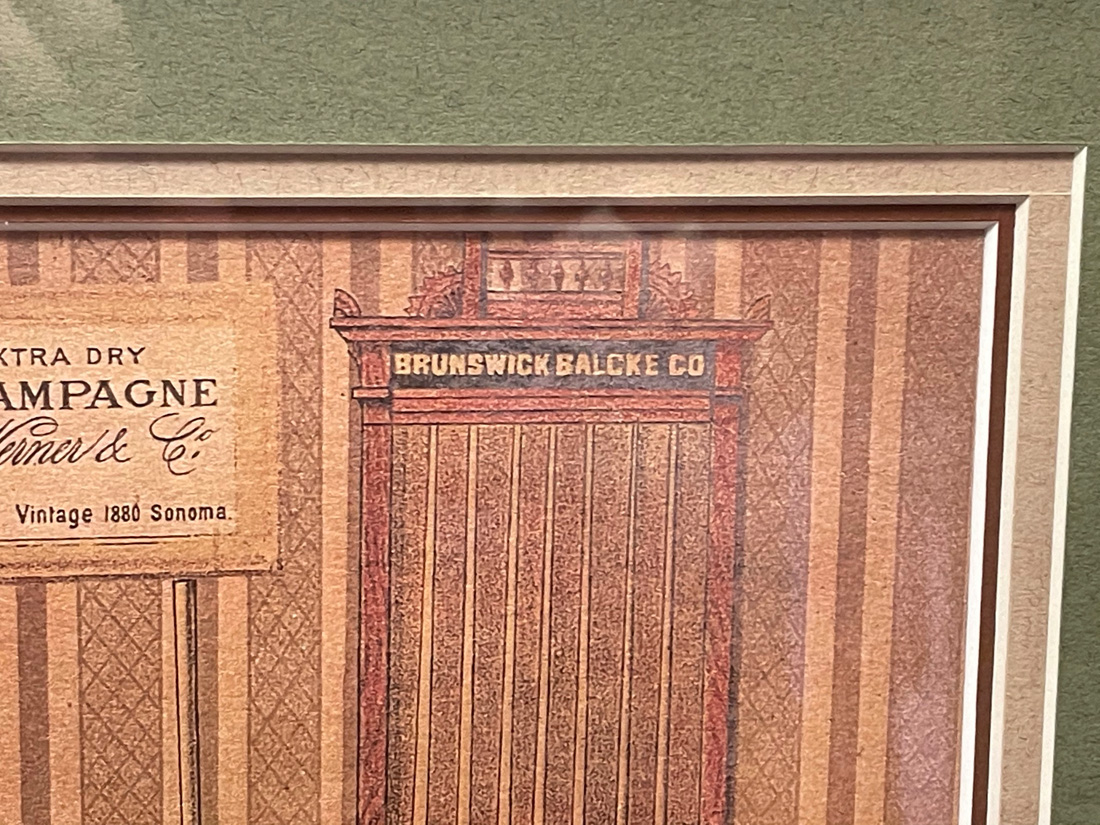
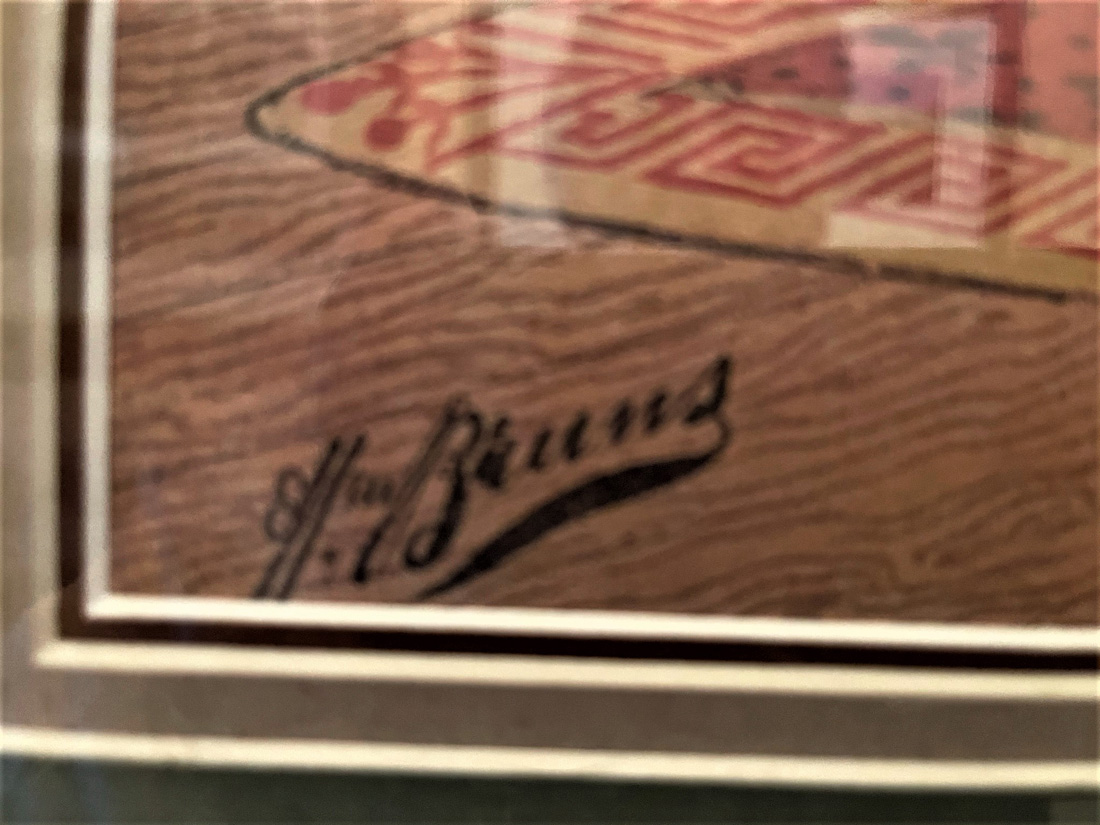
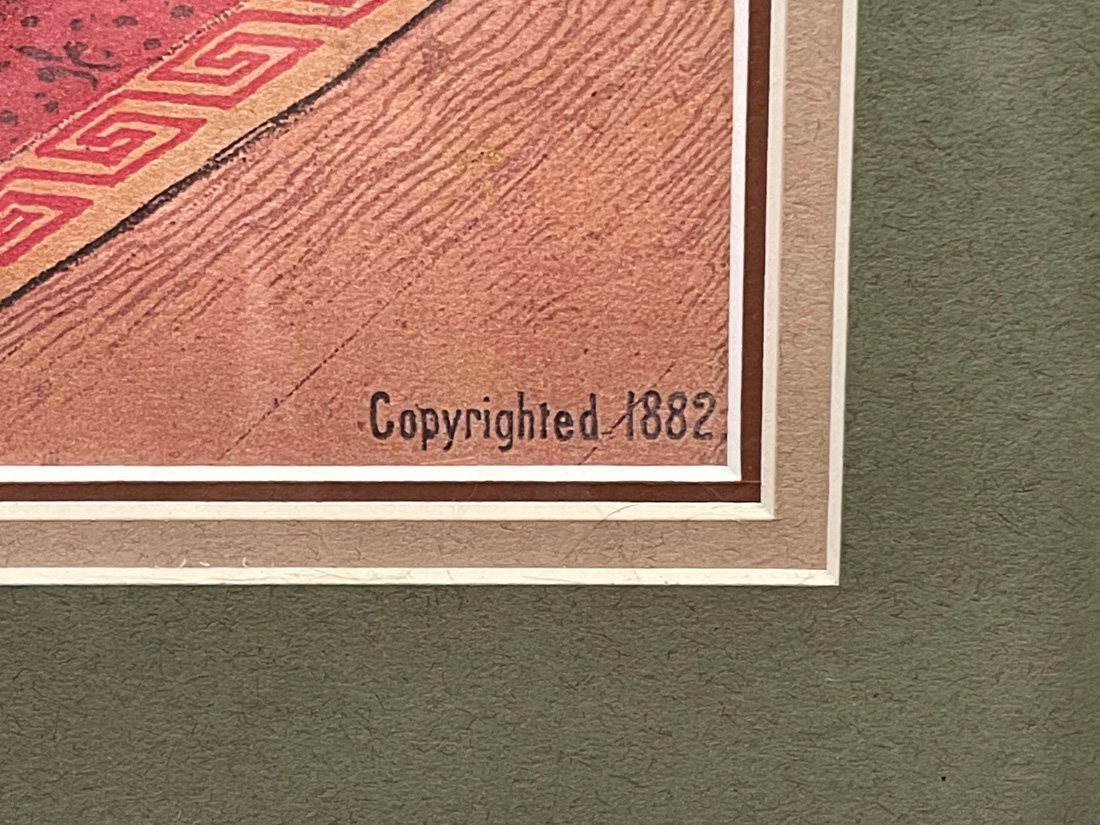
Again, from this same artist, we see conflict among men. This is not exactly a family scene. But at this time, Brunswick-Balke-Collender was glamorizing men at play and projected the acceptance of being unruly.
A Carom on the Chandelier

Up close:


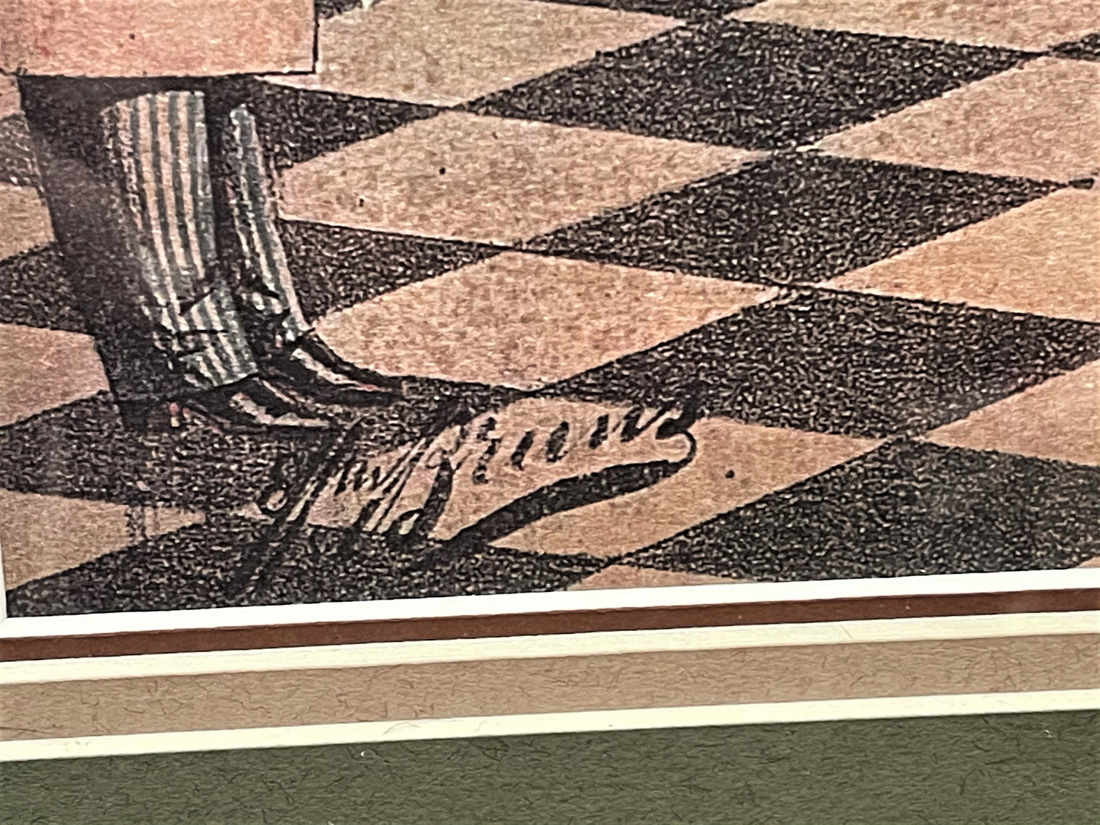
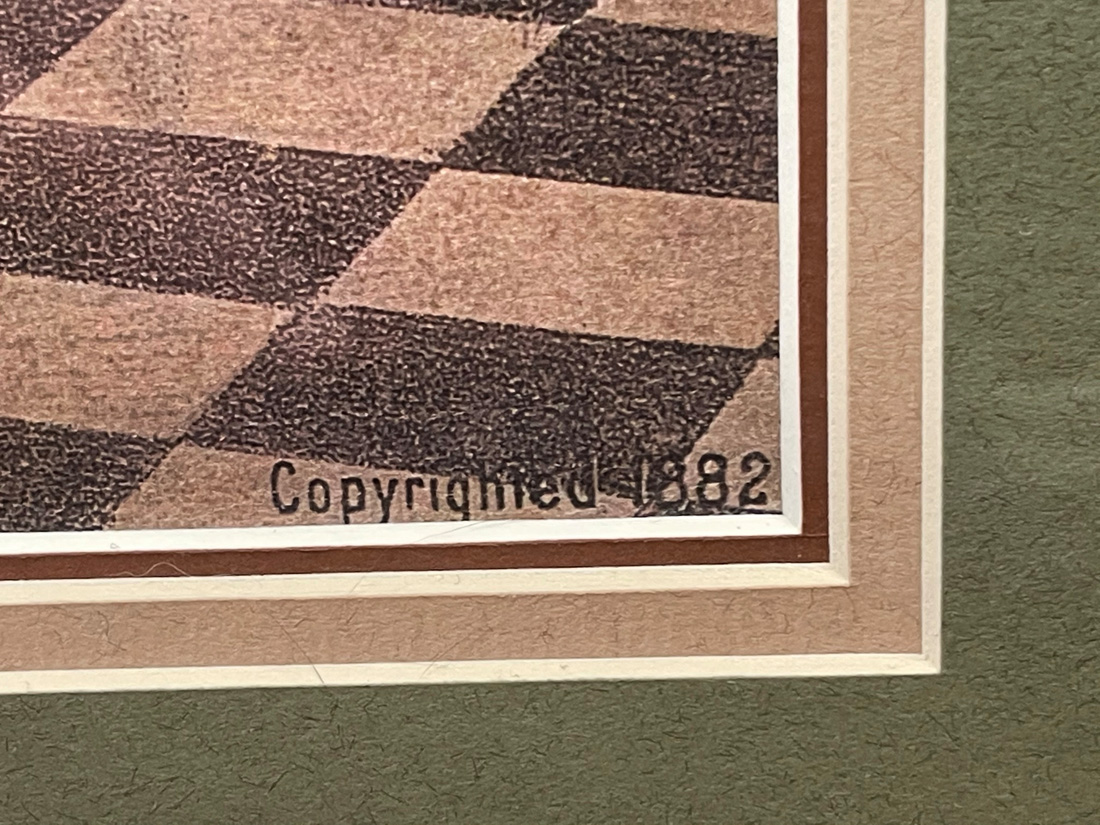
Harper’s "New Monthly Magazine" in February 1867 did an article on Wild Bill Hickok’s famous gun fight. This was a time when there was a mass migration of immigrant Europeans west of the Mississippi. It was also a time when lawlessness and vigilante activity was rampant. In this article Wild Bill brings his horse, Black Nell, into the saloon and has the horse stand on the billiard table. Certainly, a raucous image of billiards for the time. It also confirms billiard tables had made their way into the wild west.


Another artist’s rendition of that same Wild Bill (https://en.wikipedia.org/wiki/Wild_Bill_Hickok), “scout of the west” folk lore.

